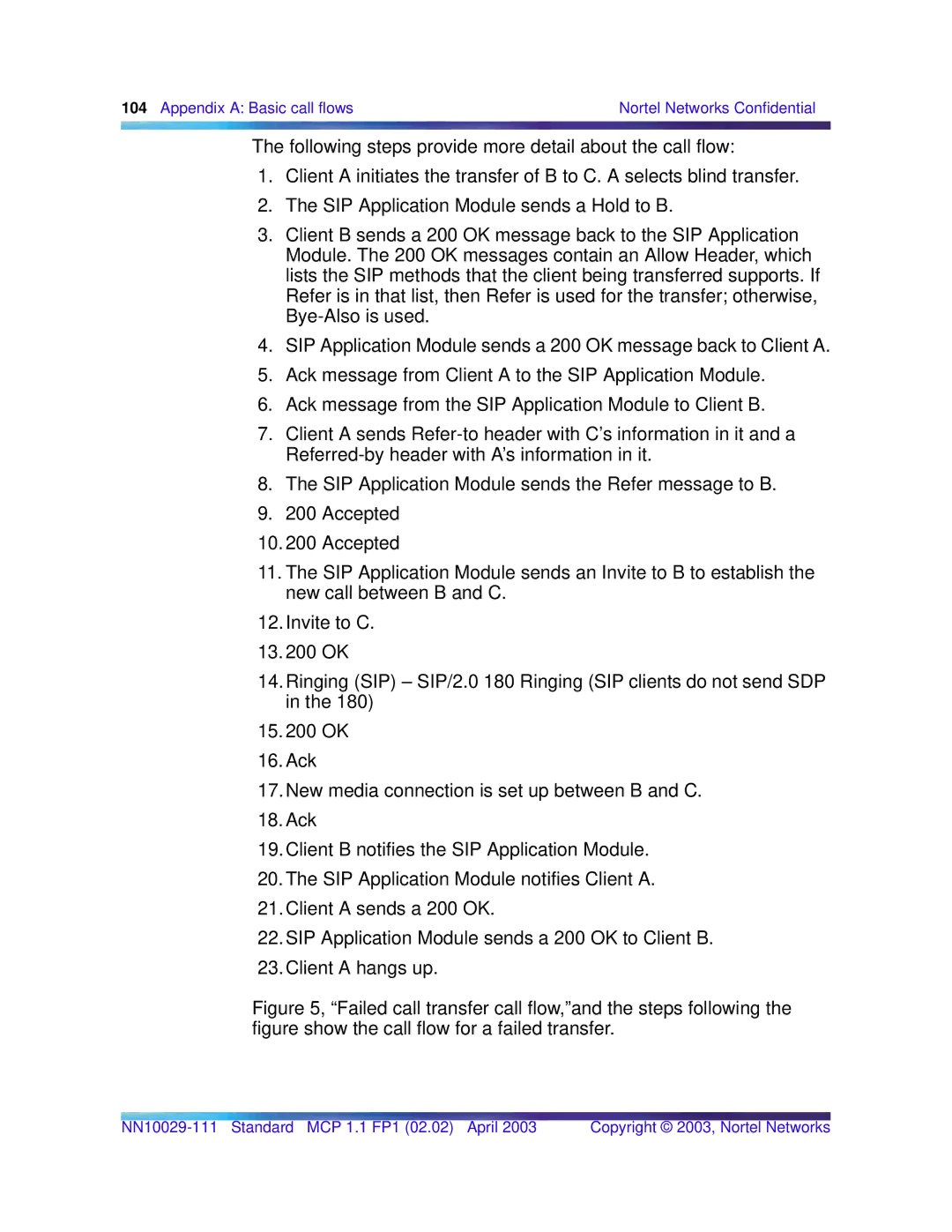
104 Appendix A: Basic call flows | Nortel Networks Confidential |
|
|
The following steps provide more detail about the call flow:
1.Client A initiates the transfer of B to C. A selects blind transfer.
2.The SIP Application Module sends a Hold to B.
3.Client B sends a 200 OK message back to the SIP Application Module. The 200 OK messages contain an Allow Header, which lists the SIP methods that the client being transferred supports. If Refer is in that list, then Refer is used for the transfer; otherwise,
4.SIP Application Module sends a 200 OK message back to Client A.
5.Ack message from Client A to the SIP Application Module.
6.Ack message from the SIP Application Module to Client B.
7.Client A sends
8.The SIP Application Module sends the Refer message to B.
9.200 Accepted
10.200 Accepted
11.The SIP Application Module sends an Invite to B to establish the new call between B and C.
12.Invite to C.
13.200 OK
14.Ringing (SIP) – SIP/2.0 180 Ringing (SIP clients do not send SDP in the 180)
15.200 OK
16.Ack
17.New media connection is set up between B and C.
18.Ack
19.Client B notifies the SIP Application Module.
20.The SIP Application Module notifies Client A.
21.Client A sends a 200 OK.
22.SIP Application Module sends a 200 OK to Client B.
23.Client A hangs up.
Figure 5, “Failed call transfer call flow,”and the steps following the figure show the call flow for a failed transfer.
Copyright © 2003, Nortel Networks |
